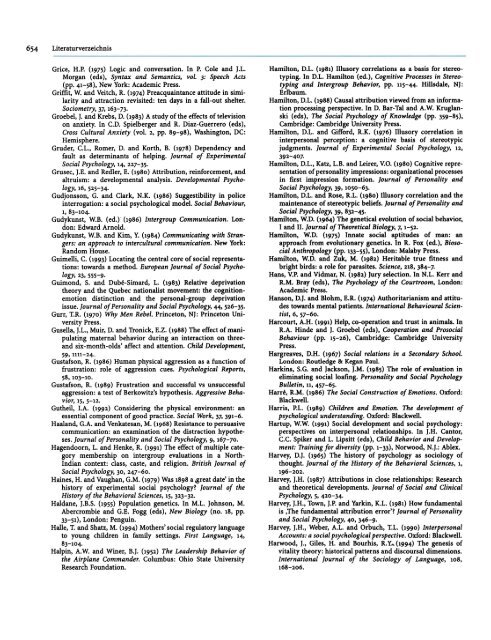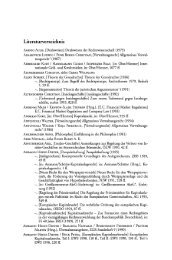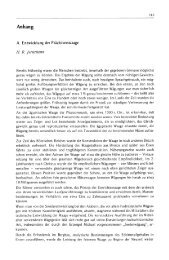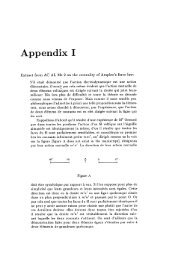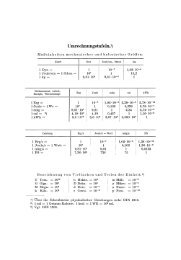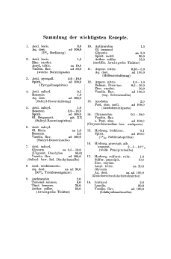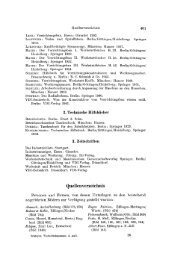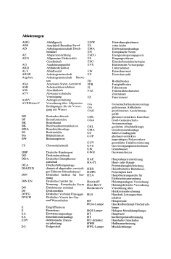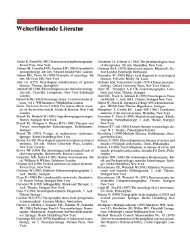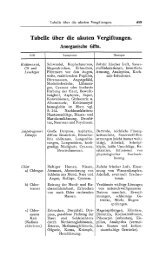Literaturverzeichnis 653Meaning, Form and Use in Context: linguistic applications (pp.253-7), Washington, DC: Georgetown University Press.Giles, H. and Johnson, P. (1981) The role of language in ethnicgroup relations. In J.C. Turner and H. Giles (eds), IntergroupBehaviour pp. 199-243, Oxford: Basil Blackwell.Giles, H. and Johnson, P. (1986) Perceived threat, ethnic commitmentand inter-ethnic language behaviour. In Y. Kim (ed.),Interethnic Communication: recent research (pp. 91-ll6),Beverly Hills: Sage.Giles, H. and Powesland, P. (1975) Speech Style and Social Evaluation.London: Academic Press.Giles, H. and Robinson, W.P. (eds) (1990) Handbook 0/ Languageand Social Psychology. Chichester: Wiley.Giles, H. and Street, R.L. (1994) Communicator characteristicsand behavior. In M.L. Knapp and G.R. Miller (eds), Handbooko/Interpersonal Communication (pp. 103-61), Thousand Oaks,CA: Sage.Giles, H. and Wiemann, J.M. (1987) Language, sodal comparisonand power. In C.R. Berger and S. Chaffee (eds), Handbook ofCommunication Science (pp. 350-84), Newbury Park, CA:Sage.Gilly, M. (1989) The psycho-sodal mechanisms of cognitive constructions.Experimental research and teaching perspectives.International Journal 0/ Educational Research, 13, 607-21.Gilmore,D.G. (1990) Manhood in the Making: cultural concepts 0/masculinity. New Haven and London: Yale University Press.Gilovich, T. (1981) Seeing the past in the present: the effect ofassodations to familiar events on judgments and dedsions.Journal 0/ Personality and Social Psychology, 40, 797-808.Glachan, M. and Light, P. (1982) Peer interaction and learning:can two wrongs make a right? In G. Butterworth and P. Light(eds), Social Cognition. Studies 0/ the development 0/ understanding(pp. 87-102). Chicago: The University of ChicagoPress.Glass, D.C., Gordon, A. and Henchy, T. (1970) The effects of sodalstimuli on psychophysiological reactivity to an aversive fIlm.Psychonomic Science, 20, 255-6.Glasser, W. (1975) Reality Therapy: a new approach to psychiatry.London: Harper & Row.Gleitman, L.R. and Wanner, E. (1982) Language acquisition: thestate of the art. In E. Wanner and L.R. Gleitman (eds), LanguageAcquisition: the state of the art (pp. 3-48), Cambridge:Cambridge University Press.Goffman, E. (1963) Behavior in Public Places. New York: FreePress.Goldfield, B.A. (1990) Pointing, naming, and talk about objects:referential behaviour in children and mothers. First Language,10, 231-42.Golinkoff, R.M. (ed.) (1983) The Transition from Prelinguistic toLinguistic Communication. Hillsdale, NJ: Erlbaum.Gollwitzer, P.M. (1990) Action phases and mind-sets. In E.T. Higginsand R.M. Sorrentino (eds), Handbook 0/ Motivation andCognition: Foundations 0/ Social behavior (vol. 2, pp. 53-92),New York: Guilford Press.Gollwitzer, P.M. (1991) Abwägen und Planen. Bewußtseinslagen inverschiedenen Handlungsphasen. Göttingen: Hogrefe.Gollwitzer, P.M. (1993) Goal achievement: The rule of intentions.In M. Hewstone and W. Stroebe (eds), European Review 0/Social Psychology (vol. 4, pp. 141-85), Chichester: Wiley.Goodluck, H. (1991) Language Acquisition: a linguistic introduction.Oxford: Blackwell.Gordon, K.H. (1924) Group judgments in the field of liftedweights. Journal 0/ Experimental Psychology, 7, 398-400.Gordon, R.M. (1987) The Structure 0/ Emotions: investigations incognitive philosphy. New York: Cambridge University Press.Gorsuch, R.L. and Ortberg, J. (1983) Moral obligation and attitudes:their relation to behavioral intentions. Journal of Personalityand Social Psychology, 44, 1025-8.Gottman, J. (1982) Emotional responsiveness in marital conversations.Journal 0/ Communication, 32, 108-20.Gottman, J. (1993) Studying emotion in sodal interaction. InM. Lewis and J.M. Haviland (eds), Handbook of Emotions(pp. 475-88), New York: Guilford Press.Gottman, J. and Levenson R. (1983) Marital interaction: physiologicallinkage and affective exchange. Journal 0/ Personalityand Social Psychology, 45, 587-97.Gottman, J. and Levenson, R. (1988) The sodal psychophysiologyof marriage. In P. Noller and M.A. Fitzpatrick (eds), Perspectiveson Marital Interaction (pp. 182-200), Clevedon: MultilingualMatters.Gouldner, A.W. (1960) The norm of redprodty: a preliminarystatement. American Sociological Review, 25, 161-78.Grafen, A. (1982) How not to measure inclusive fitness. Nature,298,425-6.Granberg, D. and Holmberg, S. (J990) The intention-behaviourrelationship among US and Swedish voters. Social PsychologyQuarterly, 53, 44- 54·Grant, J.D., Grant, J. and Toch, H. (1982) Police-citizen and dedsionsto arrest. In V. Konecni (eds), The Criminal Justice System:a social psychological analysis, San Frandsco, CA: Freeman.Graumann, C.F. (1976) Modification by migration: Vidssitudes ofcross-national communication. Social Research, 43, 367-85.Graumann, C.F. (1983) Theorie und Geschichte. In G. Lür (ed.),Bericht über den 33. Kongreß der Deutschen Gesellschaft fürPsychologie (vol. 1, pp. 64-75), Göttingen: Hogrefe.Graumann, C.F. (1986) The individualization of the sodal and thedesodalization of the individual: Floyd H. Allport's contributionto sodal psychology. In C.F. Graumann and S. Moscovici(eds), Changing Conceptions of Crowd Mind and Behaviour,New York: <strong>Springer</strong>.Graumann, C.F. (1987) History as multiple reconstruction ofmainstreams, tributaries and undercurrents. In G. Seminand B. Krahe (eds), Issues in Contemporary German SocialPsychology (pp. l-ll), London: Sage.Graumann, C.F. (1988) From knowledge to cognition. In D. BarTal and A.W. Kruglanski (eds), Social Psychology 0/ Knowledge(pp. 15-29), Cambridge: Cambridge University Press.Graumann, C.F. and Moscovici, S. (eds) (1986) Changing Conceptionsof Crowd Mind and Behavior. New York: <strong>Springer</strong>Verlag.Gray, J.A. (1990) Brain systems that mediate both emotion andcognition. Cognition and Emotion, 4, 269-88.Greenberg, M.S., .Wilson, C.E., Ruback, R.B. and Mills, M.K.(1979) Socia! and emotional determinants of victim crimereporting. Social Psychology Quarterly, 42, 364-72.Greenstein, T.N. and Knotterus, J.D. (1980) The effects of differentialevaluations on status generalization. Social PsychologyQuarterly, 43, 147-54.Greenwald, A.G. (1968) Cognitive learning, cognitive response topersuasion, and attitude change. In A.G. Greenwald, T.C.Brock and T.M. Ostrom (eds), Psychological Foundations 0/Attitudes (pp. 147-170), San Diego, CA: Academic Press.Greenwa!d, A.G. (1975a) Does the Good Samaritan parableincrease helping? A comment on Darley and Batson's no-effectconclusion. Journal 0/ Personality and Social Psychology, 32,578-83·Greenwald, A.G. (1975b) On the inconclusiveness of ,crudal' testsof dissonance versus self-perception theories. Journal ofExperimental Social Psychology, ll, 490-9.
654 LiteraturverzeichnisGriee, H.P. (1975) Logic and conversation. In P. Cole and J.L.Morgan (eds), Syntax and Semantics, vol. 3: Speech Acts(pp. 41-58), New York: Academie Press.Griffit, W. and Veitch, R. (1974) Preacquaintance attitude in similarityand attraction revisited: ten days in a fall-out shelter.Sociometry, 37, 163-73·Groebel, J. and Krebs, o. (1983) A study of the effects of televisionon anxiety. In C.O. Spielberger and R. Diaz-Guerrero (eds),Cross Cultural Anxiety (vol. 2, pp. 89-98), Washington, OC:Hemisphere.Gruder, C.L., Romer, O. and Korth, B. (1978) Oependency andfault as determinants of helping. Journal of ExperimentalSocial Psychology, 14, 227-35.Grusec, J.E. and Redler, E. (1980) Attribution, reinforcement, andaltruism: a developmental analysis. Developmental Psychology,16, 525-34.Gudjonsson, G. and Clark, N.K. (1986) Suggestibility in policeinterrogation: a sodal psychologieal model. Social Behaviour,1,83-104·Gudykunst, W.B. (ed.) (1986) Intergroup Communication. London:Edward Arnold.Gudykunst, W.B. and Kim, Y. (1984) Communicating with Strangers:an approach to intercultural communication. New York:Random House.Guimelli, C. (1993) Locating the central core of sodal representations:towards a method. European Journal of Social Psychology,23, 555-9.Guimond, S. and Oube-Simard, L. (1983) Relative deprivationtheory and the Quebec nationalist movement: the cognitionemotiondistinction and the personal-group deprivationissue. Journal of Personality and Social Psychology, 44, 526-35.Gurr, T.R. (1970) Why Men Rebel. Princeton, NJ: Princeton UniversityPress.Gusella, J.L., Muir, O. and Troniek, E.Z. (1988) The effect of manipulatingmaternal behavior during an interaction on threeandsix-month-olds' affect and attention. Child Development,59, 1111-24·/Gustafson, R. (1986) Human physical aggression as a function offrustration: role of aggression cues. Psychological Reports,58,103-10.Gustafson, R. (1989) Frustration and successful vs unsuccessfulaggression: a test of Berkowitz's hypothesis. Aggressive Behavior,15, 5-12.Gutheil, LA. (1992) Considering the physieal environment: anessential component of good practiee. Social Work, 37, 391-6.Haaland, G.A. and Venkatesan, M. (1968) Resistance to persuasivecommunication: an examination of the distraction hypotheses.Journal of Personality and Social Psychology, 9, 167-70.Hagendoorn, L. and Henke, R. (1991) The effect of multiple categorymembership on intergroup evaluations in a NorthIndian context: dass, caste, and religion. British Journal ofSocial Psychology, 30, 247-60.Haines, H. and Vaughan, G.M. (1979) Was 1898 a,great date' in thehis tory of experimental sodal psychology? Journal of theHistory of the Behavioral Sciences, 15, 323-32.Haldane, J.B.S. (1955) Population geneties. In M.L. Johnson, M.Abercrombie and G.E. Fogg (eds), New Biology (no. 18, pp.33-51), London: Penguin.Halle, T. and Shatz, M. (1994) Mothers' sodal regulatory languageto young children in family settings. First Language, 14,83-104·Halpin, A.W. and Winer, B.J. (1952) The Leadership Behavior ofthe Airplane Commander. Columbus: Ohio State UniversityResearch Foundation.Hamilton, O.L. (1981) Illusory correlations as a basis for stereotyping.In D.L. Hamilton (ed.), Cognitive Processes in Stereotypingand Intergroup Behavior, pp. 115-44. Hillsdale, NJ:Erlbaum.Hamilton, O.L. (1988) Causal attribution viewed from an informationprocessing perspective. In o. Bar-Tal and A.W. Kruglanski(eds), The Social Psychology of Knowledge (pp. 359-85),Cambridge: Cambridge University Press.Hamilton, O.L. and Gifford, R.K. (1976) Illusory correlation ininterpersonal perception: a cognitive basis of stereotypiejudgments. Journal of Experimental Social Psychology, 12,392-407·Hamilton, O.L., Katz, L.B. and Leirer, V.O. (1980) Cognitive representationof personality impressions: organizational processesin first impression formation. Journal of Personality andSocial Psychology, 39, 1050-63.Hamilton, O.L. and Rose, R.L. (1980) Illusory correlation_ and themaintenance of stereotypie beliefs. Journal of Personality andSocial Psychology, 39, 832-45·Hamilton, W.O. (1964) The genetieal evolution of sodal behavior,land 11. Journal of Theoretical Biology, 7, 1-52.Hamilton, W.O. (1975) Innate sodal aptitudes of man: anapproach from evolutionary genetics. In R. Fox (ed.), BiosocialAnthropology (pp. 133-55), London: Malaby Press.Hamilton, W.O. and Zuk, M. (1982) Heritable true fitness andbright birds: a role for parasites. Science, 218, 384-7.Hans, V.P. and Vidmar, N. (1982) Jury selection. In N.L. Kerr andR.M. Bray (eds), The Psychology of the Courtroom, London:Academic Press.Hanson, O.J. and Blohm, E.R. (1974) Authoritarianism and attitudestowards mental patients. International Behavioural Scientist,6, 57-60.Harcourt, A.H. (1991) Help, co-operation and trust in animals. InR.A. Hinde and J. Groebel (eds), Cooperation and ProsocialBehaviour (pp. 15-26), Cambridge: Cambridge UniversityPress.Hargreaves, O.H. (1967) Social relations in a Secondary School.London: Routledge & Kegan Paul.Harkins, S.G. and Jackson, J.M. (1985) The role of evaluation ineliminating sodal loafing. Personality and Social PsychologyBulletin, 11, 457-65.Harre, R.M. (1986) The Social Construction of Emotions. Oxford:Biackwell.Harris, P.L. (1989) Children and Emotion. The development ofpsychological understanding. Oxford: Blackwell.Hartup, W.W. (1991) Sodal development and sodal psychology:perspectives on interpersonal relationships. In J.H. Cantor,C.C. Spiker and L. Lipsitt (eds), Child Behavior and Development:Training for diversity (pp. 1-33), Norwood, N.J.: Ablex.Harvey, O.J. (1965) The history of psychology as sodology ofthought. Journal of the History of the Behavioral Sciences, 1,196-202.Harvey, J.H. (1987) Attributions in dose relationships: Researchand theoretieal developments. Journal of Social and ClinicalPsychology, 5, 420-34·Harvey, J.H., Town, J.P. and Yarkin, K.L. (1981) How fundamentalis ,The fundamental attribution error'? Journal of Personalityand Social Psychology, 40, 346-9.Harvey, J.H., Weber, A.L. and Orbuch, T.L. (1990) InterpersonalAccounts: a social psychological perspective. Oxford: Blackwell.Harwood, J., Giles, H. and Bourhis, R.Y .. (1994) The genesis ofvitality theory: historical patterns and discoursal dimensions.International Journal of the Sociology of Language, 108,168-206.
- Page 2: 620 GlossarAssimilation ("assimilat
- Page 5 and 6: Glossar 623Feldtheorie ("field theo
- Page 7 and 8: Glossar 625Investitionsmodell ("inv
- Page 9 and 10: Glossar 627korrespondierende Schlu
- Page 11 and 12: Glossar 629es keinen Aufschluß dar
- Page 13 and 14: Glossar 631Rubikon-Modell ("Rubicon
- Page 15 and 16: -----------------------------------
- Page 17 and 18: Glossar 635Vergleichsniveau für Al
- Page 19 and 20: 638 Literaturverzeichnisthe type of
- Page 21 and 22: 640 LiteraturverzeichnisBem, D.J. (
- Page 23 and 24: 642 LiteraturverzeichnisBretherton,
- Page 25 and 26: 644 LiteraturverzeichnisCampbell, D
- Page 27 and 28: 646 Literaturverzeichnisfemale fada
- Page 29 and 30: 648 Literaturverzeichnisbehavior. J
- Page 31 and 32: 650 LiteraturverzeichnisFeldman, R.
- Page 33: 652 LiteraturverzeichnisFrijda, N.H
- Page 37 and 38: 656 LiteraturverzeiehnisHilton, D.J
- Page 39 and 40: 658 LiteraturverzeichnisJellison, J
- Page 41 and 42: 660 Literaturverzeichnisstereotypin
- Page 43 and 44: 662 LiteraturverzeichnisLocke, D. a
- Page 45 and 46: 664 LiteraturverzeichnisMiceli, M.P
- Page 47 and 48: 666 LiteraturverzeichnisNemeth, C.
- Page 49 and 50: 668 LiteraturverzeichnisPiaget, J.
- Page 51 and 52: 670 Literaturverzeiehnis(eds), Altr
- Page 53 and 54: 672 LiteraturverzeichnisSchmitt, B.
- Page 55 and 56: 674 LiteraturverzeichnisSinclair-de
- Page 57 and 58: 676 LiteraturverzeichnisStroebe, W.
- Page 59 and 60: 678 LiteraturverzeichnisTurner, J.C
- Page 61 and 62: 680 LiteraturverzeichnisWilder, D.A
- Page 63 and 64: SachverzeichnisKursive Seitenzahlen
- Page 65 and 66: Sachverzeichnis 685EAESP 21Ehebruch
- Page 67 and 68: Sachverzeichnis 687- kohäsive 81-
- Page 69 and 70: Sachverzeichnis 689Konsistenz (cons
- Page 71 and 72: Sachverzeichnis 691Schematisierung
- Page 73: Sachverzeichnis 693Validität (vali


